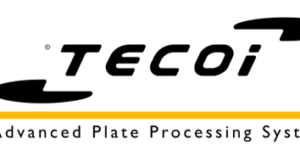3D Lasers and Their General Application
The many applications of 3D laser processing systems make them a useful and economical tool for manufacturers everywhere. In this primer, Frank Geyer of TRUMPF not only examines their capabilities and limitations, but shares some useful tips for challenging applications and reviews some opportunities that you may not be familiar with.
Posted: September 5, 2012
The many applications of 3D laser processing systems make them a useful and economical tool for manufacturers everywhere. This primer not only examines their capabilities and limitations, but shares some useful tips for challenging applications and reviews some opportunities that you may not be familiar with.
The use of light as a tool in manufacturing has been around for quite a long time. Lasers are typically used now for cutting, welding, marking and laser metal deposition processes. There are a variety of laser sources and the one chosen is, of course, based on the application.
Significant challenges to this technology exist in bringing the beam to the workpiece and increasing the productivity of the laser systems. One key requirement for success is the near-to-perpendicular position of the beam to the surface to be machined. This development and the availability of high speed, high precision laser systems has helped improve productivity and, along with their increasing affordability, expanded laser system usage to the point of replacing conventional processing methods. Anyone who has seen a flat sheet cutter “flying” over the workpiece knows exactly what I am referring to.
DRIVING VERSUS FLYING
The evolution of laser systems is somewhat comparable to the advancements made in cars. First they were crude, slow and absent of user-friendly options. Over time they improved and became more refined. Today’s automobiles are high-tech pieces of machinery. Driving, however, is still confined to ground contact . . . it’s almost two-dimensional.
Now imagine yourself flying instead of driving. Think about the possibilities and the performance that you could experience. It’s an exciting thought, and the comparison is analogous to stepping from 2D to 3D laser processing.
3D LASER PROCESSING DEFINED
While the idea of 3D laser processing is not new, the process requirements – such as part tolerances and final quality – were often not achievable. But thanks to advancements in precision mechanics and controls, the technology matured to the point where 3D laser applications have become precise and economical enough to be a viable solution.
This technology is based on the ability to machine a three-dimensionally shaped part through a multi-axis system that uses the combination of 5 or more axes. The step from 2D flat sheet cutting to 3D laser processing requires the addition of 3 axes, not just one, which increases the complexity of the system. However, advanced controls and software make the process user-friendly and enable a 3D laser system to be quickly adapted for various applications and geometries. Any design changes can be addressed by reprogramming the parameters of the laser and NC path, which is both fast and flexible.
Examples of such systems include gantry-style configurations and 5-axis robots. Beam delivery is accomplished via bending mirrors in the case of a CO2 laser. For a solid state laser, the beam is delivered by fiber optic cable. Both methods are fully capable of cutting within their specifications and are commonly used in manufacturing.
ABILITIES, CHALLENGES AND LIMITATIONS
Modern 3D laser systems are able to process highly complex three-dimensional geometries, from flat surfaces angled in space to freeform surfaces with numerous directional surface changes – all cut at high speeds with high precision. Examples of parts processed using a 3D laser are plentiful and range from a simple bracket to a complex automotive sheet metal component.
One source of the increased abilities of the modern high end 5-axis system is the dynamic cutting head, which offers an additional stroke along the axis of the nozzle with very high accelerations. It combines with distance sensing technology that allows the system to run over small features, such as wrinkles from drawing a sheet metal part, without the need for additional programming. Here the main axes follow the programmed NC path while the dynamic cutting head adjusts for the small part variations that are typical in numerous applications. These changes previously required a significant reduction of speed, but now their impact on cycle time is greatly reduced. Advanced laser controls enable systems to adjust the laser power and cutting speed on-the-fly according to the geometry.
3D processing speeds are slower than a flat sheet cutter because all 5 axes – not just two axes – are moving simultaneously. The addition of three more axes raises the combined moments of inertia, thus reducing accelerations /decelerations compared to a 2D system. Cutting gas flow on 3D surfaces also affects the processing speeds when compared to 2D applications Axis speeds of high end systems are now approaching 4000 ipm, however, which is typically much quicker than the actual processing speeds but used to reduce the time for repositioning of the cutting head (See Figure 1)












